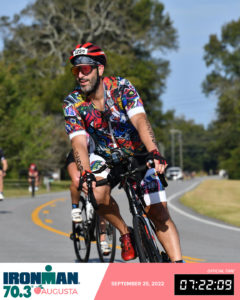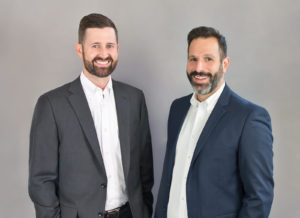
With its beautiful landscapes and pleasant weather, Georgia is an ideal location for both bicycling and walking. However, with the increasing population and urban growth, the risk of accidents involving bicyclists and pedestrians has become a significant concern. In recent years, Georgia has witnessed a rise in bicycle and pedestrian accidents, resulting in severe injuries and fatalities. These incidents often occur due to various factors, including driver negligence, failure to follow traffic laws, and environmental conditions.
Navigating the legal landscape surrounding bicycle and pedestrian accidents in Georgia can be complex. It is crucial for both bicyclists and pedestrians to understand their legal rights and responsibilities when sharing the road. This knowledge not only helps in preventing accidents but also ensures that the injured parties can seek appropriate compensation in case of an incident.
Being informed about Georgia’s traffic laws, safety measures, and the legal recourse available to accident victims can make a significant difference in the outcome of a personal injury claim. This blog post aims to provide an overview of the legal rights and responsibilities of bicyclists and pedestrians in Georgia, the common causes of accidents, and tips for preventing such incidents.
In Georgia, bicyclists under the age of 16 are required to wear a properly fitted and fastened bicycle helmet while riding on public roads, bike paths, or any other public right-of-way. This law aims to protect young riders from head injuries, which are one of the leading causes of bicycle-related accidents.
Bicyclists in Georgia are subject to the same traffic rules and signals as motor vehicle drivers. They must obey traffic signs, signals, and pavement markings, ride in the same direction as traffic, and signal their intentions to turn or stop. Bicyclists are also required to yield to pedestrians in crosswalks and exercise due care to avoid collisions.
Georgia law requires bicycles to be equipped with proper lighting and reflectors when ridden at night or during low-visibility conditions. A white front light visible from at least 300 feet away and a red rear reflector or light visible from a distance of at least 300 feet are mandatory. Additionally, bicycles must have a white reflector on the front wheel and a red reflector on the rear wheel, both visible from at least 300 feet.
When sharing the road with pedestrians, bicyclists in Georgia must exercise caution and prioritize pedestrian safety. They should yield to pedestrians on sidewalks, crosswalks, and multi-use paths, as well as give an audible signal before overtaking or passing them. Bicyclists are also prohibited from riding on sidewalks in business districts or where signs indicate that bicycle riding is not allowed. By adhering to these legal obligations, bicyclists can help prevent accidents and ensure the safety of all road users.
In Georgia, pedestrians have the right-of-way when they are within a marked or unmarked crosswalk at an intersection. Vehicles must stop and remain stopped to allow pedestrians to safely cross the road. Additionally, pedestrians must not suddenly leave a curb or other safe place and walk or run into the path of a vehicle that is too close to yield.
Pedestrians are required to follow traffic control signals and use crosswalks when crossing the road. When pedestrian signals are present, they must obey the “Walk” and “Don’t Walk” signals. Pedestrians should only begin crossing during the “Walk” signal and, if already in the crosswalk when the “Don’t Walk” signal appears, must continue to the other side as quickly and safely as possible.
Jaywalking, or crossing the road outside of a crosswalk or designated crossing area, is prohibited in Georgia. Pedestrians must not cross between adjacent intersections with traffic control signals, except within marked crosswalks. Additionally, walking along or on a roadway when a sidewalk is available is not allowed.
When sharing the road with bicyclists, pedestrians must remain vigilant and adhere to traffic laws to ensure the safety of all users. This includes using sidewalks or designated walking areas and obeying traffic signals. Pedestrians should also be aware of their surroundings and avoid walking in bike lanes or on multi-use paths where bicycles have priority. By following these legal obligations, pedestrians can contribute to a safer environment for themselves and bicyclists alike.
Driver negligence is a leading cause of bicycle and pedestrian accidents in Georgia. When drivers are distracted, speeding, or fail to yield the right-of-way, they put cyclists and pedestrians at risk. Common examples of driver negligence include texting while driving, driving under the influence, and not paying attention to the presence of cyclists and pedestrians on the road.
Bicyclists can also contribute to accidents when they fail to follow traffic laws or engage in unsafe cycling practices. Examples of bicyclist negligence include not obeying traffic signals, riding against the flow of traffic, failing to signal turns or stops, and not using proper lighting and reflectors at night or during low-visibility conditions.
Pedestrian negligence is another factor that can lead to accidents involving cyclists and pedestrians. When pedestrians do not use crosswalks, walk in the roadway, or disregard traffic signals, they put themselves and others at risk. Being aware of one’s surroundings and following traffic laws can significantly reduce the likelihood of accidents.
Environmental factors, such as poor lighting and road conditions, can contribute to bicycle and pedestrian accidents. Poorly lit streets can make it difficult for drivers to see cyclists and pedestrians, while uneven or damaged road surfaces can cause cyclists to lose control of their bikes. Additionally, inadequate signage, obstructed views at intersections, and inclement weather can further increase the risk of accidents. Addressing these environmental factors can help create a safer environment for all road users.
Victims of bicycle and pedestrian accidents caused by another party’s negligence may be entitled to file a personal injury claim. To successfully establish negligence, the victim must prove four elements: duty, breach, causation, and damages. This means that the responsible party owed a duty of care to the victim, breached that duty through their negligent actions, directly caused the victim’s injuries, and that those injuries resulted in damages (e.g., financial losses or pain and suffering).
If a personal injury claim is successful, the victim may be awarded compensation for various damages. These can include medical expenses (past and future), lost wages, loss of earning capacity, pain and suffering, and emotional distress. In some cases, punitive damages may be awarded if the responsible party’s actions were especially reckless or harmful.
Georgia operates under a modified comparative negligence system, which means that a victim’s compensation may be reduced if they are found to be partially at fault for the accident. Under this system, a victim can still recover damages as long as their percentage of fault is less than 50%. However, their compensation will be reduced by their percentage of fault.
In cases where both the victim and the responsible party share some degree of fault, the victim’s compensation will be adjusted accordingly. For example, if a bicyclist is found to be 30% at fault for an accident, their compensation will be reduced by 30%. If the victim’s fault equals or exceeds 50%, they will not be able to recover any compensation. It is crucial to work with an experienced attorney to navigate the complexities of comparative negligence and ensure that a victim’s rights are protected.
Bicyclists should always wear a properly fitted helmet and use appropriate safety equipment such as reflective clothing, lights, and reflectors to increase visibility. Check your bike’s tires, brakes, and gears regularly to ensure they are in good working condition.
Bicyclists must follow the same traffic laws as motor vehicles, including obeying traffic signals, stop signs, and yielding to pedestrians in crosswalks. Ride in the same direction as traffic and use designated bike lanes when available.
Practice defensive riding by staying alert and anticipating potential hazards. Maintain a safe distance from parked cars to avoid being hit by an opening door, and always signal your intentions when turning or changing lanes. Be cautious at intersections and be prepared for drivers who may not see you or yield the right-of-way.
Pedestrians should always use crosswalks and obey traffic signals when crossing the street. If a crosswalk or signal is unavailable, cross at well-lit intersections, and ensure that you have a clear view of oncoming traffic.
Whenever possible, walk on sidewalks or designated walking paths. If a sidewalk is not available, walk on the shoulder of the road, facing oncoming traffic, and stay as far away from the roadway as possible.
Make yourself visible to drivers and bicyclists by wearing light-colored or reflective clothing, especially during low-light conditions. Avoid using electronic devices that may distract you from your surroundings, and always make eye contact with drivers before crossing the street.
By following these safety tips, both bicyclists and pedestrians can reduce the risk of accidents and create a safer environment for all road users.
In conclusion, it is crucial for bicyclists and pedestrians in Georgia to be aware of their legal rights and responsibilities. This includes understanding the causes of accidents, the legal rights of accident victims, and the role of comparative negligence in determining compensation. Both bicyclists and pedestrians must adhere to state laws and follow safety guidelines to prevent accidents and protect their legal rights in case of an accident.
By understanding and adhering to state laws, bicyclists and pedestrians can help prevent accidents, reduce the risk of injury, and protect their legal rights in the event of an accident. If you or a loved one has been involved in a bicycle or pedestrian accident due to someone else’s negligence, it is essential to seek legal advice from experienced personal injury attorneys.

Contact Cohen & Sinowski today for a free consultation by calling 404-351-8888, emailing Thomas@candspc.com, or visiting their website at www.cohensinowski.com. Don’t hesitate to reach out and get the help you need to protect your rights and get the compensation you deserve.
Remember, #localmatters, and Cohen & Sinowski is here to support you in your time of need.